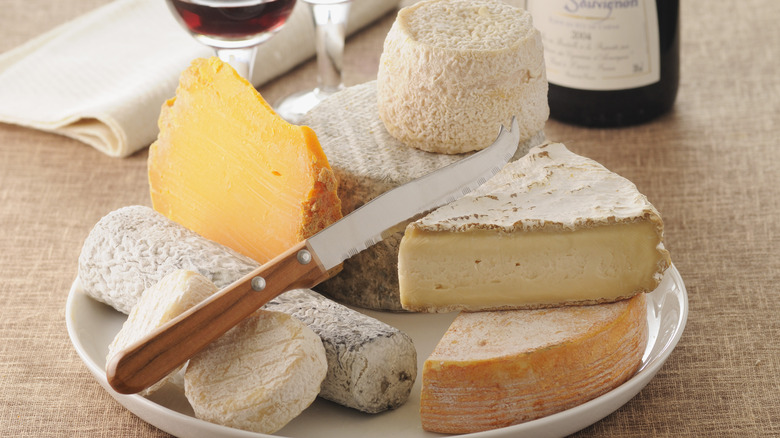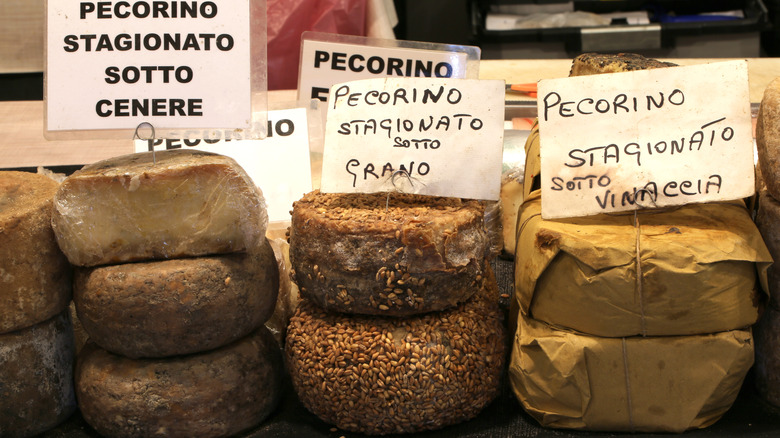An Expert Says This Is The Key Label To Look For When Shopping For European Cheese
Wine, pizza, meat, and cheese — there are some foods that Europeans simply do better. Even tomatoes can wind up tastier when they come from across the pond, as evidenced by San Marzanos (which make the best pizza sauce). An easy way to tell if a little extra TLC has gone into your European products is to check the label and to know what to look for. Items that have to adhere to a strict set of standards (which are often the highest-quality options) will have an acronym depicting their superiority. With San Marzanos, for example, you'll want to look for a DOP certification, also known as PDO (Protected Designation of Origin). When it comes to cheese, it can vary by country.
Thanks to Matthew Rose, ACS CCP, CCSE, partner of the Fairfield Greenwich Cheese Company, we learned everything you need to know about how to pick out the best European cheese. In an interview with Tasting Table, Rose said the main thing to look for on a label is a geographical indication, or G.I.
A G.I. designates that a food originated from a specific place and possesses qualities that link it to that location. A PDO certification is one type of G.I., but the beauty of European cheese is that there are plenty of options that meet these qualifications. "One positive aspect to the European cheese industry is broader access to cheeses that are made at a larger scale with more quality intact," Rose told us.
Raise your standards for cheese
As Rose explained, a PDO label is typically used for cheeses from the EU and the U.K. In order for a block to achieve this esteemed status, it needs to uphold specific standards for where it's made, how it's aged, and how the milk is sourced and used. Examples of PDO cheeses include Parmigiano-Reggiano, feta, manchego, and asiago. You may also see the label AOP (Appellation d'Origine Protégée), which Rose says is specifically given to French and Swiss products. However, you'll also find the national AOC label given by France to French foods, which stands for Appellation d'Origine Contrôlée, or Controlled Destination of Origin in English. Brie de Meaux is an example of a variety that can claim AOC status, although not all brie can.
Aside from the specific standards they uphold, Rose also identified a few other benefits of European cheese with G.I. labels. "These products typically have an established, if not considerably larger, production industry that aims to retain value even when it is made at that scale," Rose said. "This ensures an organized and efficient industry that prioritizes accessibility and profitability." Here in the U.S., we don't have quite the same standards — which is why you'll see casual names like parmesan and gruyere, which aren't the same as their European counterparts: Parmigiano-Reggiano and Gruyère. So, to figure out which is which, be sure to read the label carefully.

